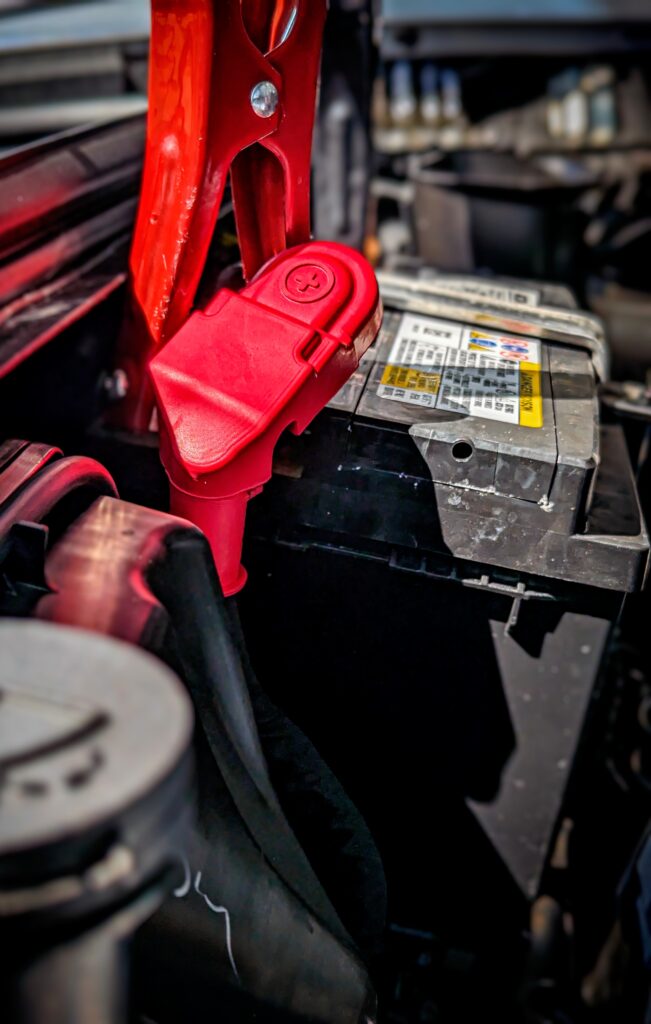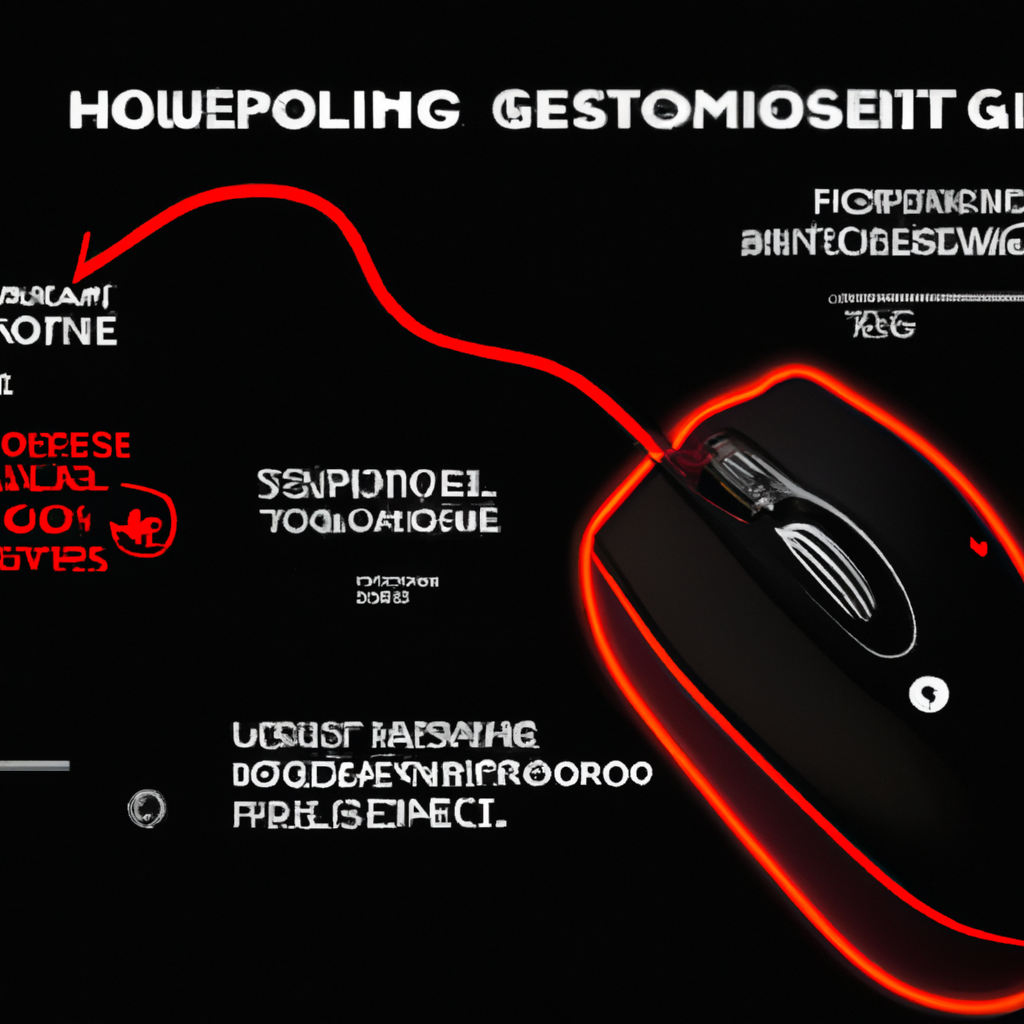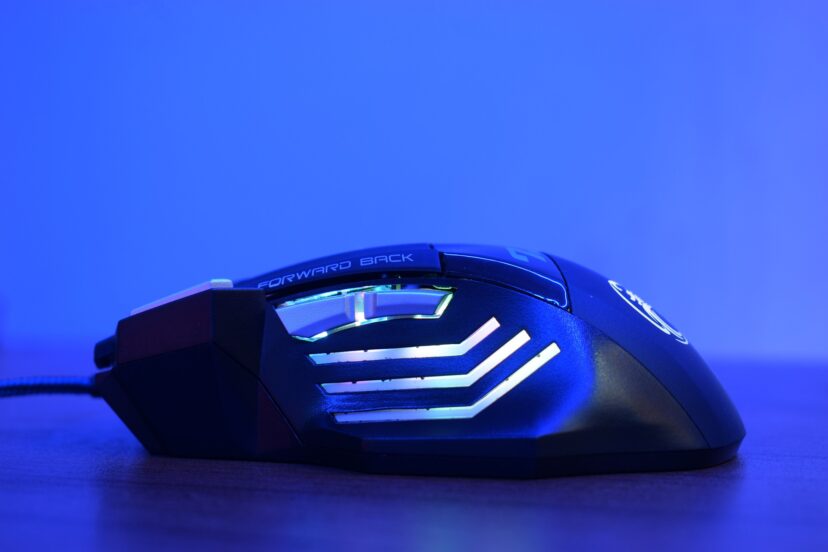What Are Common Troubleshooting Steps For A Malfunctioning Gaming Mouse?10 Simple Tips
If you find yourself in a bit of a pickle with a malfunctioning gaming mouse, fear not! We’ve got you covered with some helpful tips on “What Are Common Troubleshooting Steps For A Malfunctioning Gaming Mouse?” to get your mouse back in action. From checking the connection to updating drivers, we’ll walk you through the common issues and their solutions. So, say goodbye to those frustrating gaming glitches and get ready to level up your troubleshooting skills!
Cleaning the Mouse
Removing Dust and Debris
When your gaming mouse starts acting up, the first step you should take is to give it a good cleaning. Dust and debris can accumulate over time, affecting the mouse’s performance and responsiveness. To clean the mouse, you can start by using a can of compressed air to blow away any loose particles. Be sure to hold the can upright and use short bursts of air to avoid damaging the internal components.
For stubborn dirt or grime, you can use a clean, lint-free cloth lightly dampened with isopropyl alcohol. Gently wipe the surface of the mouse, paying attention to the areas where your fingers typically rest. Make sure to avoid getting any liquid inside the mouse or on the optical sensor, as this can cause further damage.
Cleaning the Optical Sensor
The optical sensor is a crucial component of your gaming mouse, responsible for tracking your movements and translating them into on-screen actions. Over time, the sensor can accumulate dirt and smudges, leading to poor tracking or errant cursor movement. To clean the optical sensor, you can use a soft, lint-free cloth to gently wipe the sensor lens. Avoid using any harsh chemicals or abrasive materials, as these can scratch the lens and impair its functionality.
If wiping the sensor lens doesn’t solve the issue, you can try using a cotton swab lightly dampened with isopropyl alcohol to clean the lens more thoroughly. Again, be careful not to apply too much liquid or press too hard on the sensor, as this can cause damage.
Cleaning the Mouse Feet
The mouse feet, also known as mouse skates, are the small pads on the bottom of your gaming mouse that make contact with the mousing surface. Over time, these feet can wear down or accumulate dirt and debris, leading to a rough or uneven glide. To clean the mouse feet, you can use a soft cloth or a cotton swab lightly dampened with water. Gently wipe away any dirt or residue, ensuring that the feet are clean and smooth.
If you notice that the mouse feet are worn down or damaged, it may be time to replace them. Many gaming mouse manufacturers offer replacement feet that you can easily install yourself. Simply remove the old feet and adhere the new ones in their place, ensuring a smooth and consistent glide.
Adjusting Mouse Settings
Checking DPI Settings
DPI, or dots per inch, is a measure of how sensitive your gaming mouse is to movement. Higher DPI settings result in faster cursor movement, while lower DPI settings offer more precise control. If you’re experiencing issues with cursor speed or accuracy, it’s worth checking your mouse’s DPI settings.
Most gaming mice have software that allows you to customize the DPI settings. Open the software and look for the DPI options. You can try adjusting the DPI to a different level and see if it improves your mouse’s performance. It’s also a good idea to ensure that the sensitivity settings in your game or operating system are correctly configured to match the DPI settings you prefer.
Adjusting Polling Rate
The polling rate of your gaming mouse refers to how frequently it sends information to your computer. A higher polling rate means the mouse updates its position on the screen more frequently, resulting in smoother and more responsive cursor movement. However, increasing the polling rate can also put more strain on your computer’s resources.
To adjust the polling rate, you can typically use the software provided by your mouse’s manufacturer. Locate the polling rate settings and try different options to see which one works best for you. Keep in mind that higher polling rates require more processing power, so if you have an older or less powerful computer, you may want to stick with a lower polling rate.
Configuring Button Assignments
Gaming mice often come with extra buttons that can be programmed to perform specific functions or macros. If these buttons are not working properly, you may need to configure their assignments. Open the software provided by your mouse’s manufacturer and look for the button configuration options.
You can assign different actions to each button, such as keystrokes, macros, or multimedia controls. Experiment with different configurations to find the setup that suits your gaming style. Be sure to save your changes once you’ve configured the button assignments.

Updating Mouse Drivers
Identifying the Mouse Model
Before you can update your gaming mouse’s drivers, you need to know the exact model of your mouse. The model information is usually printed on the bottom of the mouse or can be found in the mouse’s software. Take note of the model name or number to ensure you download the correct drivers.
Downloading the Latest Drivers
Once you have identified the model of your gaming mouse, visit the manufacturer’s website to download the latest drivers. Look for the support or downloads section of the website and locate the drivers for your specific mouse model. Download the driver package and save it to your computer.
Installing the Updated Drivers
After downloading the driver package, locate the file on your computer and run the installer. Follow the on-screen instructions to install the updated drivers. During the installation process, you may be prompted to connect your gaming mouse to the computer or restart your system. Be sure to follow any additional instructions provided.
Once the updated drivers are installed, restart your computer to ensure that the changes take effect. After the restart, your gaming mouse should be recognized and properly configured with the latest drivers.
Testing the Mouse on Different Surfaces
Trying a Mousepad
If you’re experiencing tracking issues or inconsistent cursor movement, using a mousepad can help improve the performance of your gaming mouse. A good-quality mousepad provides a smooth and consistent surface for your mouse, allowing for precise tracking and smooth gliding.
Choose a mousepad that suits your gaming style and preferences. There are various options available, including cloth, hard surface, and hybrid mousepads. Experiment with different mousepads to find the one that works best for you.
Switching to a Different Surface
In some cases, the surface you’re using your mouse on can affect its performance. Shiny or reflective surfaces, such as glass or a glossy desk, can cause tracking issues or erratic cursor movement. Consider switching to a matte or non-reflective surface, such as a mousepad or a wooden desk.
If you don’t have access to a mousepad or a different desk surface, you can also try using a large piece of cardboard or a smooth hardcover book as a temporary solution. Place the cardboard or book on your desk and use your mouse on top of it. This can provide a more consistent and controlled surface for your mouse to track on.
Using a White Sheet of Paper
If you’re in a pinch and don’t have access to a mousepad or a different surface, a white sheet of paper can serve as a makeshift solution. Place the sheet of paper on your desk and use your gaming mouse on top of it. The white color of the paper provides a high-contrast background for the optical sensor, making it easier for the mouse to track your movements.
While using a sheet of paper is not as ideal as a proper mousepad or a suitable desk surface, it can help troubleshoot any problems related to the current mousing surface you’re using.

Troubleshooting Connection Issues
Checking USB Connections
If your gaming mouse is not responding or is behaving erratically, it’s important to check the USB connections. Start by verifying that the mouse is securely plugged into the USB port on your computer. Ensure that the connection is not loose or partially inserted, as this can cause intermittent connection issues.
Inspect the USB cable for any signs of damage, such as frayed wires or bent connectors. If you notice any damage, it may be necessary to replace the cable or seek professional assistance. Additionally, try connecting the mouse to a different USB port to rule out any issues with the current port you’re using.
Trying a Different USB Port
Sometimes, the USB port you’re using can become faulty or experience compatibility issues. To troubleshoot this, try connecting your gaming mouse to a different USB port on your computer. If your computer has both USB 2.0 and USB 3.0 ports, try using both to see if one works better than the other. This can help determine if the issue is specific to the USB port or if it’s related to the mouse itself.
Using a Different Cable
If you suspect that the USB cable is causing the connection issues with your gaming mouse, try using a different cable if possible. Some gaming mice have detachable cables that can be easily replaced. Otherwise, you may need to contact the manufacturer or seek professional assistance for cable repairs or replacements.
Resetting the Mouse Settings
Restoring Factory Defaults
If you have made several changes to your gaming mouse’s settings and are experiencing issues, it may be helpful to restore the mouse to its factory default settings. Restoring the factory defaults will revert all settings, including DPI, polling rate, and button assignments, back to their original configurations.
To restore the factory defaults, locate the option in your mouse’s software or use a built-in button combination if available. Follow the instructions provided to initiate the reset process. After the reset, you can customize the settings again as needed.
Performing a Firmware Reset
In some cases, a firmware reset can help resolve persistent issues with your gaming mouse. Firmware is the software embedded in the mouse’s hardware that controls its functionality. Resetting the firmware can clear any corruption or conflicts that may be causing problems.
To perform a firmware reset, consult the manufacturer’s instructions or contact their support for guidance. The process may vary depending on your mouse model. It often involves holding down specific buttons or following a sequence of button presses. Be sure to follow the instructions carefully to avoid damaging the mouse.
Calibrating the Mouse
If your gaming mouse’s cursor movement feels off or inaccurate, calibration may help improve its responsiveness and accuracy. Calibration is the process of recalibrating the mouse to ensure it accurately tracks your movements on the mousing surface.
To calibrate your gaming mouse, look for the calibration option in the mouse’s software. Follow the on-screen instructions to complete the calibration process. Typically, this involves moving the mouse in specific patterns or circles on the mousing surface. Once the calibration is complete, the mouse should track more accurately.

Testing the Mouse on Another Computer
Connecting the Mouse to a Different PC
To determine if the issues with your gaming mouse are specific to your computer, try connecting it to another PC. Borrow a friend’s computer or use a different computer if you have access to one. Connect your gaming mouse to the USB port and observe its performance on the different computer.
If the gaming mouse works fine on the other computer, it indicates that the issues are likely related to your original computer’s settings or hardware. In this case, you may need to further troubleshoot your computer’s USB ports, drivers, or operating system.
Checking for Compatibility Issues
Sometimes, compatibility issues between your gaming mouse and your computer’s hardware or operating system can cause problems. Visit the manufacturer’s website to ensure that your mouse is compatible with your computer’s specifications. Look for any known issues or compatibility requirements mentioned in the product documentation or on the website.
If your gaming mouse is not compatible with your computer, you may need to consider upgrading your hardware or seeking a different mouse that is compatible with your system.
Verifying Hardware Functionality
If your gaming mouse is still not working properly on another computer, it’s essential to verify the hardware’s functionality. Contact the manufacturer’s support or consult the user manual for specific instructions on how to test the mouse’s hardware. They may provide you with diagnostic tools or steps to identify any potential hardware failures.
If the hardware is found to be faulty, you may need to return the mouse for warranty repairs or consider purchasing a new one. Before doing so, double-check the warranty terms and any applicable return policies to ensure a smooth process.
Replacing Mouse Batteries
Opening the Battery Compartment
If your gaming mouse is wireless and powered by batteries, a malfunctioning mouse may indicate that the batteries need to be replaced. Start by locating the battery compartment on your mouse. The exact location and method of opening the compartment can vary depending on the mouse model.
Refer to the user manual or the manufacturer’s website for instructions on how to open the battery compartment. It’s important to handle the compartment and batteries with care to avoid damage or injury.
Replacing Batteries with Fresh Ones
Once the battery compartment is open, remove the old batteries and dispose of them appropriately. Insert fresh batteries into the compartment, ensuring that you align them correctly according to the polarity markings (+ and -). Make sure the batteries fit snugly and securely in the compartment before closing it.
It’s recommended to use high-quality batteries from reputable brands to ensure optimal performance and longevity. Avoid using different battery types or mixing old and new batteries, as this can affect the mouse’s power supply.
Ensuring Correct Battery Orientation
When inserting the batteries into your gaming mouse, pay close attention to the correct battery orientation. The positive (+) and negative (-) terminals of the batteries must match the corresponding markings inside the battery compartment. Ensuring correct battery orientation is crucial for the mouse to function correctly.
If you encounter any difficulties or uncertainties when inserting the batteries, refer to the user manual or contact the manufacturer’s support for guidance. They can provide you with specific instructions tailored to your mouse model.

Inspecting the Mouse Cable
Checking for Frayed Wires
If your gaming mouse has a wired connection, a frayed or damaged cable may be the cause of its malfunction. Inspect the entire length of the cable, paying attention to any visible signs of wear or damage. Look for frayed wires, exposed inner wires, or kinks in the cable that may indicate a problem.
If you notice any frayed wires or damage, it’s recommended to seek professional assistance or contact the manufacturer’s support for potential cable repairs or replacement. Avoid attempting to repair the cable yourself unless you have the necessary skills and knowledge to do so safely.
Examining the USB Connector
The USB connector at the end of the mouse cable that plugs into your computer’s USB port is prone to wear and damage due to frequent use. Examine the USB connector for any signs of damage, such as bent pins, loose connections, or corrosion.
If you notice any issues with the USB connector, it may be necessary to replace the cable or seek professional assistance. In some cases, you may be able to gently straighten any bent pins using tweezers or a small needle. However, exercise caution to avoid causing further damage.
Repairing or Replacing Damaged Cables
If you have identified damage to the mouse cable, it’s crucial to address the issue promptly to avoid further problems. Depending on the severity of the damage and your technical skills, you may attempt to repair the cable yourself or opt for professional repairs.
If you’re comfortable with electronics and have the necessary tools, you can attempt to repair the damaged cable. However, keep in mind that improper repairs can result in further damage or even render the mouse unusable. If you’re unsure or uncomfortable with repairing the cable yourself, it’s best to seek professional assistance or contact the manufacturer for guidance.
Seeking Technical Support
Contacting the Manufacturer
If you’ve exhausted all troubleshooting steps and your gaming mouse is still not functioning correctly, it’s time to reach out to the manufacturer’s support. Most gaming mouse manufacturers provide customer support through email, online chat, or phone. Locate the manufacturer’s contact information on their website and get in touch with their support team.
When contacting the manufacturer, provide them with detailed information about the issue you’re experiencing, along with any steps you’ve already taken to troubleshoot the problem. They may ask for additional information or guide you through advanced troubleshooting steps. If necessary, they may offer warranty repairs, replacement options, or further assistance.
Consulting Online Forums
Online forums and communities dedicated to gaming mice and peripherals can be a valuable resource for troubleshooting advice. Many experienced users and enthusiasts frequent these forums and are often willing to share their knowledge and experiences. Search for forums or discussion boards related to your mouse model or general gaming mouse troubleshooting.
When posting on an online forum, be sure to provide clear and concise information about the problem you’re facing. Include any relevant details, such as your mouse model, computer specifications, and the steps you’ve taken to troubleshoot the issue. Be polite and respectful when interacting with other forum members and thank them for their advice or suggestions.
Requesting Assistance from Professionals
If you’re unable to resolve the issues with your gaming mouse on your own or through manufacturer support, it may be necessary to seek assistance from professional repair technicians or IT specialists. Depending on your location, there may be local computer repair shops or specialized gaming peripheral repair services that can diagnose and repair your mouse.
Before entrusting your gaming mouse to professionals, ensure that they have experience with gaming mice and a good reputation for quality repairs. Ask for recommendations from other gamers or check online reviews to find a reliable and trustworthy service provider.




